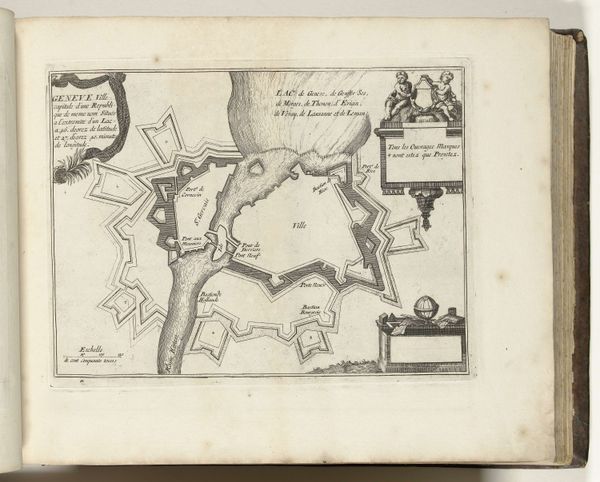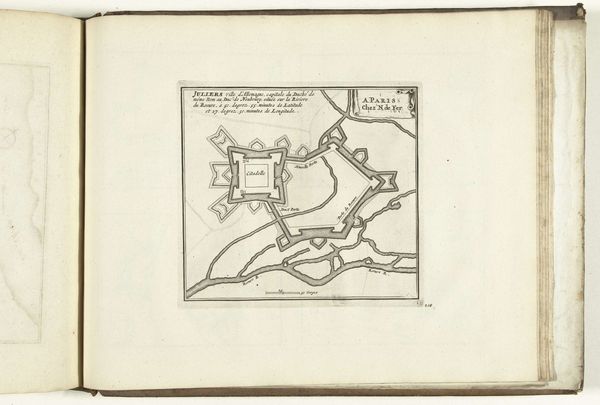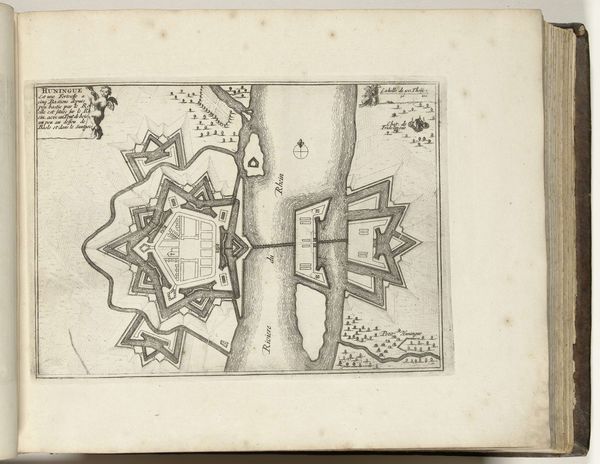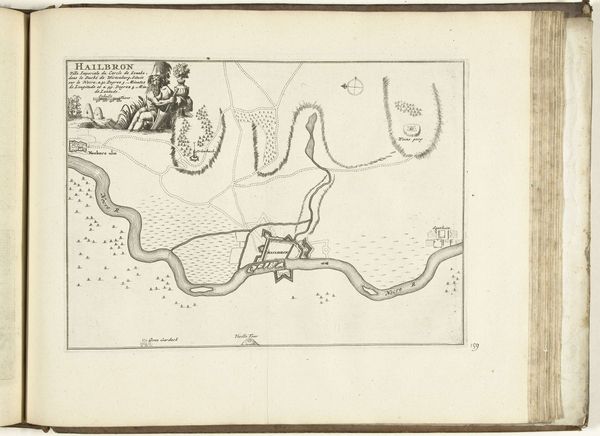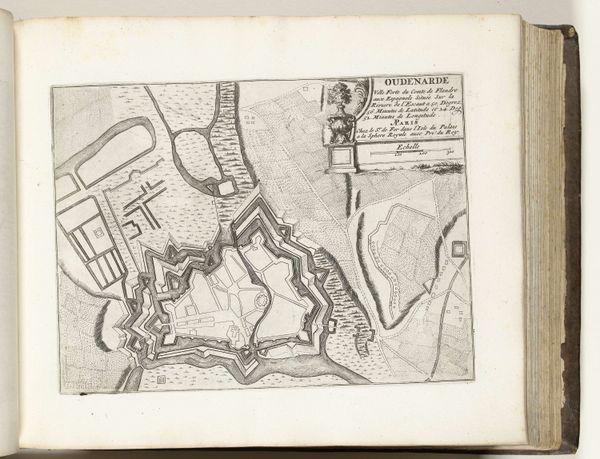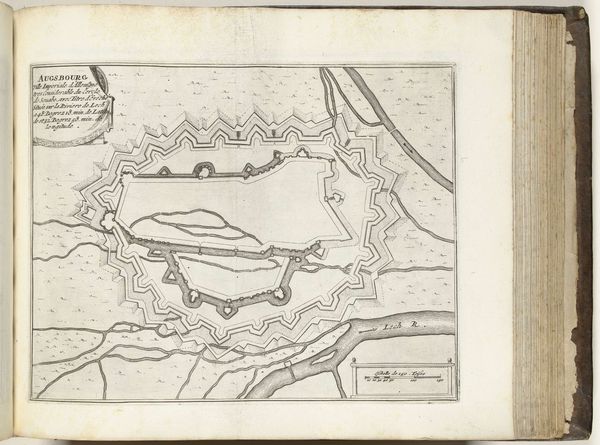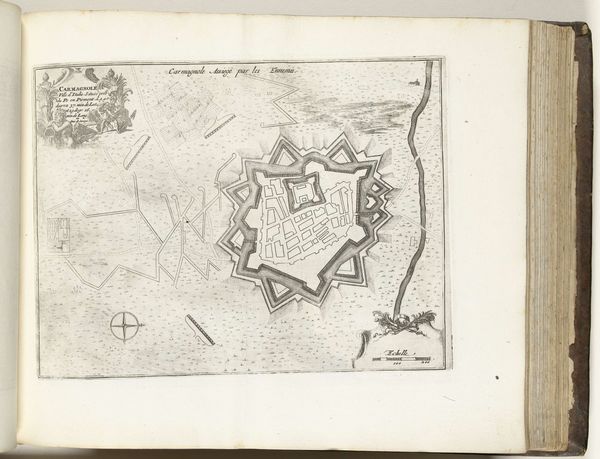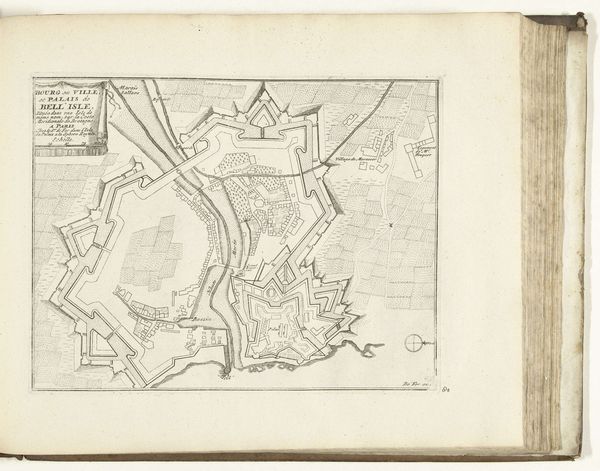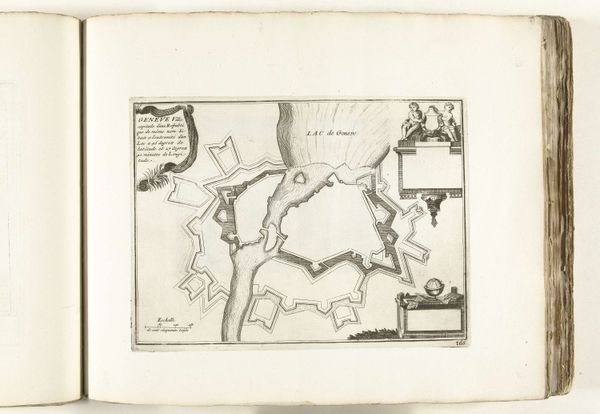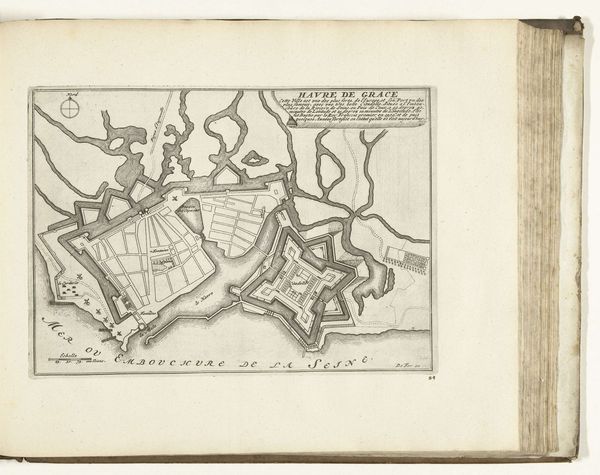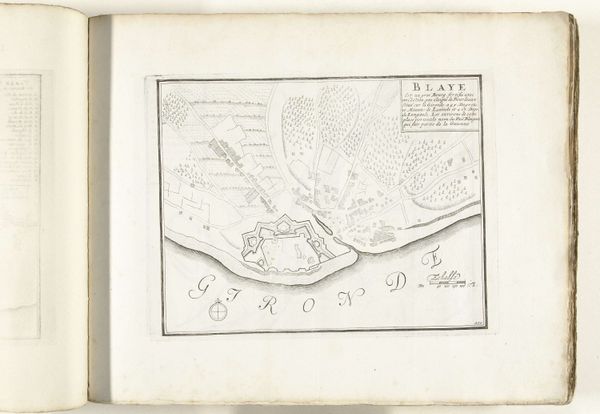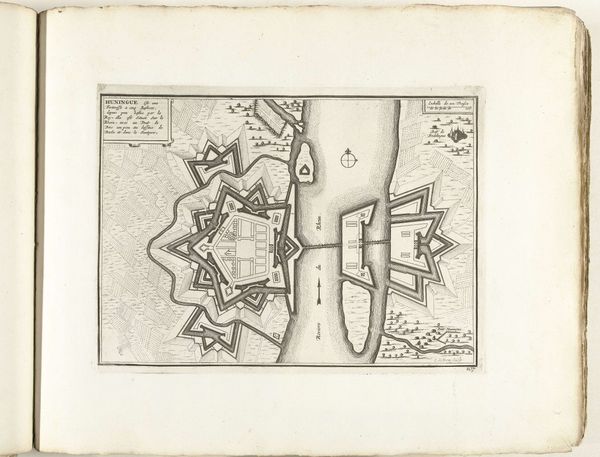
drawing, print, ink, engraving
#
drawing
#
baroque
# print
#
ink
#
geometric
#
cityscape
#
engraving
Dimensions: height 212 mm, width 283 mm
Copyright: Rijks Museum: Open Domain
This is a map of Geneva, made in 1726 by an anonymous artist, using etching. The process involves covering a metal plate with a waxy, acid-resistant substance, then scratching away lines to expose the metal underneath. The plate is then bathed in acid, which bites into the exposed lines, creating grooves. Ink is applied, and the surface wiped clean, leaving ink only in the etched lines. Finally, the plate is pressed onto paper, transferring the image. Etching allowed for the relatively easy reproduction of images, contributing to the spread of knowledge and information during the early modern period. The lines have a delicacy and precision that captures the city’s layout and fortifications. Think about the labor involved – the meticulous work of the etcher, the production of the paper and ink, and the operation of the printing press. This map isn't just a representation of Geneva; it's a product of a complex network of skills and materials. Recognizing the craft involved invites us to see beyond the image itself, and to consider the social context of its production and consumption.
Comments
No comments
Be the first to comment and join the conversation on the ultimate creative platform.
